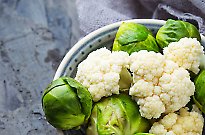
Sneak peek: examining the yogic diet

Physical practices and connections.
In the complex and contrasting world of nutritional science, there seems to be a constant influx of emerging research around food and diet. Emma Palmer explores how the yogic diet and physical practices work in synchronicity.
With so many new findings, it can become challenging to know what to eat, when to eat, how to cook and how to eat.
When we compare the complex modern dietary approach to that of ancient civilisations, we see that our ancestors had an intuitive understanding of nutrition and its role in our health. But somewhere along the way, we lost this intuitive connection to food and forgot to live by Hippocrates’ quote, “Let food by thy medicine and medicine be thy food”. So, how can we work to reclaim our connection with food and our bodies, and what can the dietary principles of our ancestors teach us?
The ancient yogis explored, through direct experience, the impact of different foods on our physical health and assessed their influence on our mind, emotions, moods, sleep cycles and energy levels. Similarly, in Ayurveda, India’s ancient system of mind-body medicine, practitioners first review an individual’s nutritional status and then look at working with yoga postures and breathing practices to support systemic health. As a yoga teacher, I’ve seen first-hand that when we dedicate ourselves to a consistent yoga practice, our bodies unforgivingly tell us what they need and, interestingly, what they don’t.
Discover more about the principles of yogic nutrition and the mind-gut connection in the August-September 2017 edition of Australian Natural Health magazine.


